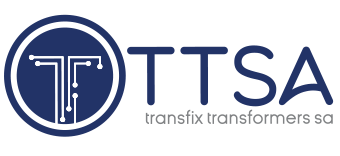The Organization of the Petroleum Exporting Countries (OPEC) Fund for International Development has signed off on two financing agreements with Madagascar totalling $65-million to boost support for sustainable socioeconomic development and energy transition. A $35-million loan will support the Specific, Measurable, Achievable, Relevant and Time-bound (Smart) Clean Cooking Project, while an additional $30-million loan will help develop transport infrastructure through the Facilitation of Commerce Corridors Project Phase II (PACFC II).
South African mining, industrial and construction industries services provider Provest Group has successfully established a solar energy system at its Steelpoort plant, in Limpopo province. Provest, which has a particular focus on the platinum, chrome and manganese sectors, implemented the solar power project to both boost energy security at, and reduce the carbon emissions of, its Steelpoort facility. “Loadshedding pushed us to explore alternative energy solutions,” explained Provest Plant Manager Martin Kubyane. “Our reliance on diesel generators contributed to increased carbon emissions. However, we recognised that with a solar installation we would be able to secure our power supply, reduce our dependence on the grid and ensure that we can continue to meet our production targets, while also reducing our carbon emissions. As a responsible organisation, the business case was very clear to us.”
South Africa’s ambitious Integrated Resource Plan serves as a “comprehensive roadmap” for meeting the country’s projected electricity demand, balancing financial considerations with climate change commitments to ensure a “sustainable and economically viable energy supply for the future”, says wind energy body South African Wind Energy Association (SAWEA). Wind power, specifically, has achieved remarkable success in the country, with 34 operational wind farms boasting an installed capacity of 3 442 MW. About 3.6-million households are supplied with electricity a year – underscoring its efficacy as a dependable energy source.
South Africa recorded a landmark 160 days with no loadshedding, the longest period in over four years. However, maintaining future grid stability will require a doubling down on wind investment as well as higher spending on transmission infrastructure, says local renewable-energy developer Red Cap. Two factors contributed to this milestone: greater availability of baseload power, as well as the new supply contributed by private wind developers. As of August 2024, State-owned utility Eskom’s available generation capacity reached over 35 000 MW, which exceeded peak demand by more than 3 000 MW.
Leading green energy company G7 Renewable Energies is making headway in advancing South Africa’s transition to a green economy with various wind energy projects in progress for the purpose of enhancing the country’s Just Energy Transition initiatives. The latest projects in construction on behalf of G7 Renewable Energies are the 140 MW Brandvalley, 140 MW Rietkloof and 103 MW Witberg wind farms.
Technical and environmental engineering advisory firm Harmattan Renewables is continuing its participation in the Wind Industry Internship Programme, so that student employees in the sector can acquire the experience and skills needed to address the challenge of an ongoing skills shortage in the local renewable-energy industry. The programme, first launched in 2021 by the South African Wind Energy Association, will equip graduates with the necessary skills to address ongoing wind turbine operations and asset management, as ageing assets can be repaired, says Harmattan Renewables director Chanda Nxumalo.
INDUSTRY NEWS
- Eskom offers more details on envisaged roles of the NTCSA and the TSODecember 18, 2025 - 11:04 am
- NTCSA says any electricity deal to salvage Mozal must ensure its financial sustainabilityDecember 17, 2025 - 3:01 pm
- ENGIE expects to start construction of 240 MW Corona PV project in late 2026December 17, 2025 - 1:04 pm
WHERE TO FIND US
Address
9 Yellow Street
Botshabelo Industrial Area
Botshabelo, Free State
Call / Email Us
Tel: +27 (0) 61 956 6772
Email: info@transfix.co.za
